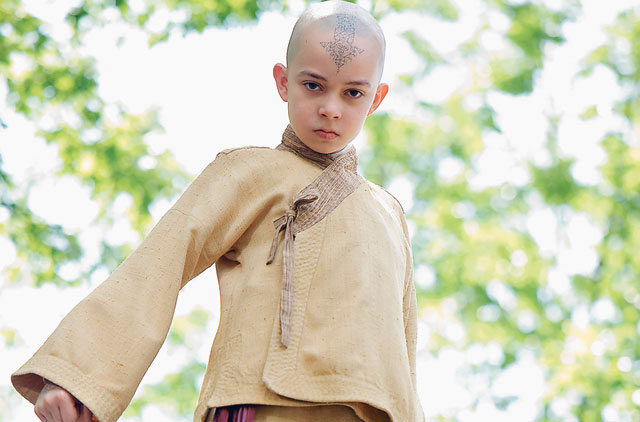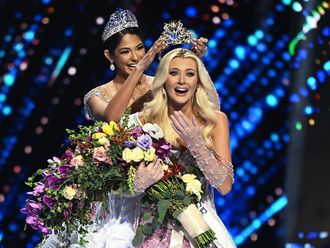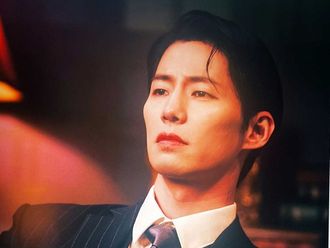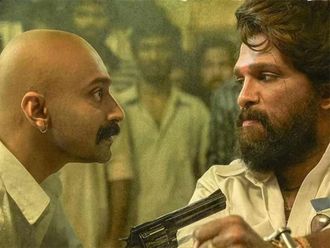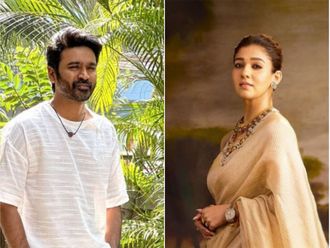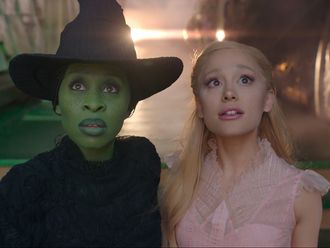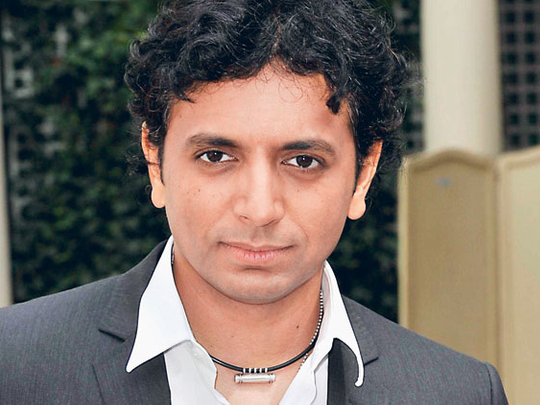
The ultimate auteur is going for the Happy Meal.
M. Night Shyamalan, the director who became a prodigal Hollywood success with his haunting stories of the supernatural before stumbling badly with his last two pictures, hopes to stage a comeback with a movie involving two giants of the consumer experience: Nickelodeon and McDonald's.
Shyamalan's latest film, The Last Airbender, marks a sharp departure for the filmmaker, whose 1999 blockbuster The Sixth Sense shot the 29-year-old director to fame and fortune. The fantasy adventure story based on a Nickelodeon animated TV series is aimed squarely at kids and families, a genre and audience that the filmmaker has largely eschewed.
Now, to get back on track after the huge commercial and critical disappointments of The Happening and Lady in the Water, Shyamalan is seeking the only redemption that Hollywood recognises — a movie with franchise potential and plenty of brand name recognition. He even met with the movie's promotional partner, McDonald's, which is serving up Last Airbender Happy Meals, and shot and appears in TV spots selling Last Airbender Flip video cameras.
"For the last 10 years, I've been working in a cottage industry of the supernatural," said Shyamalan. "And I've always had my eye on doing a franchise."
A trilogy
The filmmaker, who envisions Last Airbender as a trilogy, said the Nickelodeon series interested him because it lent itself to "long-form storytelling" and encompassed areas of personal interest: martial arts, mysticism and spirituality.
Nickelodeon's Avatar: The Last Airbender aired from 2005 to 2008, and centers upon Aang, a young avatar who controls the elements of water, fire, air and earth and holds the power to restore peace to a war-torn world.
The Last Airbender also represents a big gamble for Paramount Pictures. The Viacom Inc.-owned studio and sister company of Nickelodeon fully financed the movie, increasing the risk should it perform below expectations.
And given Shyamalan's recent misses, some have questioned Paramount's wisdom in handing him such a large-scale project, especially one designed to carry the studio at the height of the popcorn movie season. But Paramount Chief Executive Brad Grey said he's not worried.
"Like every filmmaker, Night has had his hits and misses, but I believed in his vision and that he could execute it," Grey said, adding "It's a bold step because he had to create a potential new family franchise."
The Last Airbender signals Paramount's latest push to use Viacom's TV series from Nickelodeon as a seedbed for movies, as it has with Rugrats and SpongeBob SquarePants, in a bid to grab more of the family entertainment market dominated by Disney.
It also comes at a time when nearly all the studios are stepping up efforts to target the family market, as G- and PG-rated movies account for the most reliable segment of the box office. Hollywood is preoccupied with owning recognisable brands and franchises that can generate hundreds of millions of dollars in ticket, DVD and licencing and merchandising sales.
Broadening the appeal
Shyamalan said he made the lead character, Aang, older in hopes of broadening the appeal beyond the TV series' younger viewership. "The movie is less slapsticky and more epic and darker," he said, than what viewers are accustomed to watching on Nickelodeon.
After several years of toying with the idea of making a larger-scale movie, Shyamalan said he finally settled on Last Airbender after watching the Nickelodeon series on DVD with his then-7-year-old daughter, who was taken with the "empowered" female character, Katara.
He called Grey to pitch him the idea of adapting the show into a movie. "That began a long odyssey and dance to get the movie of this scale approved," recalled Shyamalan. "It's humbling to think of the amount of trust they had in what I was saying. This isn't a small movie."
There were other departures for the director from his past practice.
Last Airbender is the first film Shyamalan has made that wasn't based on his own idea.
The movie's extensive visual effects and 3D shots made it the most technically complicated production he has overseen. And the shooting location in inhospitable Greenland was only the second time Shyamalan had shot a movie outside his longtime home near Philadelphia.
Those challenges led Shyamalan to team with husband and wife producers Frank Marshall and Kathleen Kennedy, with whom he had worked on The Sixth Sense and Signs and who have extensive experience with supersize productions that included the Bourne and Indiana Jones movies.
"Night came to us mainly because he was stepping out of his comfort zone and this was a much bigger movie than he had ever attempted," said Marshall. "His movies are very contained and usually set in one location. This was a much bigger challenge having to create this fantastical world with four nations."
Then there was the harsh reality of the hard sell.
"This is the first time that MTV Networks and Paramount have made a movie a complete priority across the entire Viacom organisation's platforms," said Pam Kaufman, Nickelodeon's chief marketing officer, who coordinated a cross-promotional campaign with sister channels MTV, Comedy Central, Spike TV and country-themed CMT.
The filmmaker was enlisted by Paramount and Nickelodeon to actively participate in what it bills as the cable channel's largest movie promotion, meeting not only with McDonald's but master toy licensee Spin Master Ltd. and video game licencee THQ Inc.
"I love the sell," said Shyamalan, who said he enjoyed the commercials he made for American Express a few years ago when the financial company featured well-known artists to promote its charge cards.
Paramount's Grey said he was optimistic about the movie's commercial prospects based on audience reaction in test screenings and strong prerelease "tracking," particularly among males.
Did you know?
With a production cost of $150 million and a blockbuster-size $130-million marketing budget, The Last Airbender is more than twice as expensive as any of M. Night Shyamalan's previous eight films.



